Wade C.
gamer level 5
4940 xp
4940 xp
followers
32
32
Use my invite URL to register (this will give me kudos)
https://boardgaming.com/register/?invited_by=wadeithan
profile badges




recent achievements

Time Well Spent - News
Click on the hourglass 100 times that appears when you are browsing News pages. learn more >
Click on the hourglass 100 times that appears when you are browsing News pages. learn more >

Reporter Trainee
Earn Reporter XP to level up by completing Reporter Quests!
Earn Reporter XP to level up by completing Reporter Quests!

Viscount / Viscountess
Gain 25 total followers
Gain 25 total followers

Intermediate Reviewer
Review 8 games and receive a total of 380 positive review ratings.
Review 8 games and receive a total of 380 positive review ratings.
Player Stats
Critic (lvl 2)
650 xp
650 xp
Explorer (lvl 3)
1473 xp
1473 xp
Professor (lvl 2)
461 xp
461 xp
Reporter (lvl 2)
314 xp
314 xp
About Me
I used to be big into competitive Magic: the Gathering, but then when I became a father, my free time understandably dropped significantly. I may not have much time to play games anymore, but I still love them and play as much as I can. I also look forward to the day that my son is old enough to start introducing games to him and have started to keep an eye in that direction as I acquire new games.
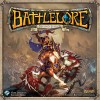




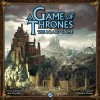
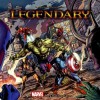


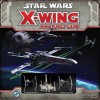
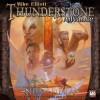
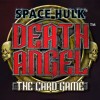

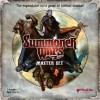


















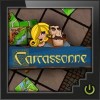
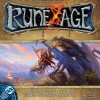
















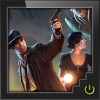







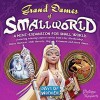
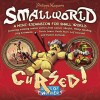




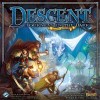


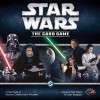










Sentinels of the Multiverse
Overview
Sentinels of the Multiverse is a fixed-deck, cooperative card game in which players take on the roles of original superheroes working together to stop the bad guy.
Setup
The most time consuming part of setup is choosing which heroes to play as, which villian to fight, and which environment to use. Choosing the right combinations is important to avoid making things too easy or nigh impossible to beat, and choosing a hero that fits with your playstyle is obviously probably important to your enjoyment of the game. The more games you get under your belt, the more you’ll get a feel for what works with what and how each hero plays, so this will take less time with each subsequent game.
Once everything has been chosen, it’s just a matter of shuffling the decks, drawing opening hands, and reading the “setup” section on the villain’s card.
Gameplay
Gameplay is pretty simple. You start with the villain’s turn, checking for any “beginning of turn” effects. Once all (if there are any) of those are resolved, you play the top card off the villain’s deck, either resolving its effect or putting it into play depending on the card type. Then you check for any “end of turn” effects and resolve them, concluding the villain’s turn.
Next come the heroes’ turns. Starting with the player clockwise from the villain, each hero will take his/her turn. At the beginning of a hero’s turn, they resolve any “beginning of turn” effects, and then have the opportunity to play one card from their hand and use one power from a card they have in play (including the hero identity card). Once they’ve done so, they draw a card or, if they didn’t play a card or use a power this turn, draw two cards. The hero’s turn ends and any “end of turn” effects resolve. Play then passes to the next hero, and continues around until all heroes have taken their turns.
Finally, the environment gets a turn. Environments and villains play fairly similarly, so this will probably sound familiar. First, resolve any “beginning of turn” effects, then play the top card of the environment deck, then resolve any “end of turn” effects. Once that’s done, it’s the villain’s turn again, and everything continues in this order until the villain is defeated, the heroes are all defeated, or an alternate loss condition (set by the villain or environment) is met.
Learning Curve
There is virtually no learning curve to the mechanics of the game. It’s incredibly simple at its core, but as with many card games, the interactions and abilities on the cards can complicate things, sometimes very much. The main learning curve, though, comes from learning the individual heroes and how to play them effectively, and learning about how the villains and environments play against you. There’s such a wide variety, even without the expansions, that it can take a few games before you really start to feel like you are able to effectively come up with a gameplan.
Components
The components are great. I normally sleeve card games, but due to the large number of cards available across the base game and expansions, I never did with this, and the cards have held up very well. They also have good, superhero-flavored art. It’s not the style that has become popular in the last 25 years in superhero comics, though, so if you’re looking for “grim and gritty” or hyper-detailed art, this won’t meet those criteria, but it fits the game’s tone exceptionally well. My only real beef with the cards is the use of Comic Sans font. I know it fits thematically, but my background in publishing has instilled a hatred of all uses of Comic Sans font. Your mileage may vary on that one, though.
The game comes with a ton of tokens and markers, though. While they’re all good quality, I can’t recommend that anyone use them exclusively, as the game becomes insanely fiddly. I suggest using a combination of the global modifier tokens and some d10’s to track life or downloading one of the available apps to track everything. It’s nice that they included the tokens, but things change so frequently, you’re constantly making change or consolidating tokens.
Overall Judgment/TL;DR Takeaway
While the game isn’t perfect, it is still my favorite purely co-op game, and hits the table much more frequently than any other ones. The member of my gaming group who typically is opposed to anything other than competitive games says he “doesn’t hate this game,” which is very high praise. If you’re in the market for a superhero game that perfectly evokes the theme, this is the game for you. Sure, the heroes aren’t licensed heroes everyone recognizes (though I personally like that they’re original creations, and many are analogues for big name heroes anyway) and it may take a few games to really get a feel for all of the characters, but it’s definitely worth it. There’s just so much variety in the box that you could play dozens of times before even needing to think about the expansions. With such a low learning curve and a hero for every playstyle, you’ll feel like you’re saving the world in no time (even though you’ll probably fail a fair amount of the time).